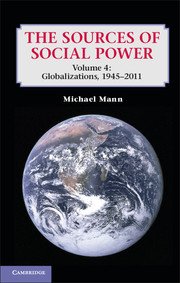Book contents
- Frontmatter
- Contents
- 1 Globalizations
- 2 The postwar global order
- 3 America in war and cold war, 1945–1970
- 4 U.S. civil rights and identity struggles
- 5 American empire during the cold war, 1945–1980
- 6 Neoliberalism, rise and faltering, 1970–2000
- 7 The fall of the Soviet alternative
- 8 The Maoist alternative reformed
- 9 A theory of revolution
- 10 American empire at the turn of the twenty-first century
- 11 Global crisis
- 12 Global crisis
- 13 Conclusion
- Bibliography
- Index
5 - American empire during the cold war, 1945–1980
Published online by Cambridge University Press: 05 January 2013
- Frontmatter
- Contents
- 1 Globalizations
- 2 The postwar global order
- 3 America in war and cold war, 1945–1970
- 4 U.S. civil rights and identity struggles
- 5 American empire during the cold war, 1945–1980
- 6 Neoliberalism, rise and faltering, 1970–2000
- 7 The fall of the Soviet alternative
- 8 The Maoist alternative reformed
- 9 A theory of revolution
- 10 American empire at the turn of the twenty-first century
- 11 Global crisis
- 12 Global crisis
- 13 Conclusion
- Bibliography
- Index
Summary
The world is a very varied place. Though in the post–World War II period it has experienced globalization, all three of the main pillars of globalization – capitalist expansion, the adoption of the nation-state form, and American empire – have entwined with very different social structures and development opportunities across the world. U.S. policy was dominated everywhere by the cold war and fear of communist advances, but different parts of the world were situated differently in relation to the cold war. So I discuss separately four macroregions, the West, East and Southeast Asia, Latin America, and the Middle East. I will do this through the narrative lens of American empire, though this should not be taken as indicating that I believe American policy was decisive in determining their patterns of development.
It is useful to begin by recapitulating the main varieties of empire that I distinguished in Volume 3.
Direct Empire occurs where conquered territories are incorporated into the realm of the core, as in the Roman and Chinese Empires at their height. The sovereign of the core also becomes sovereign over the periphery. The United States has never attempted this.
- Type
- Chapter
- Information
- The Sources of Social Power , pp. 86 - 128Publisher: Cambridge University PressPrint publication year: 2012

